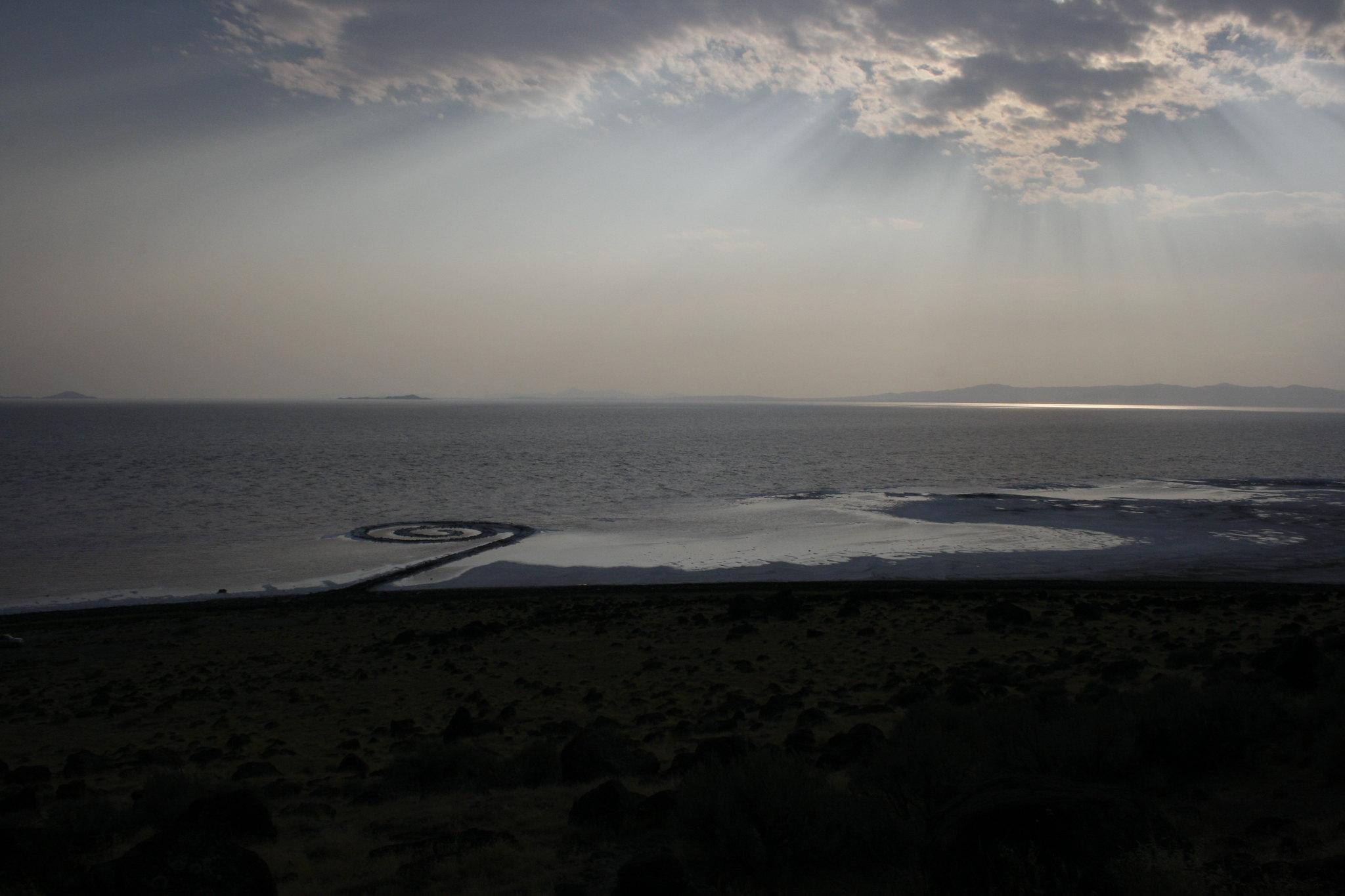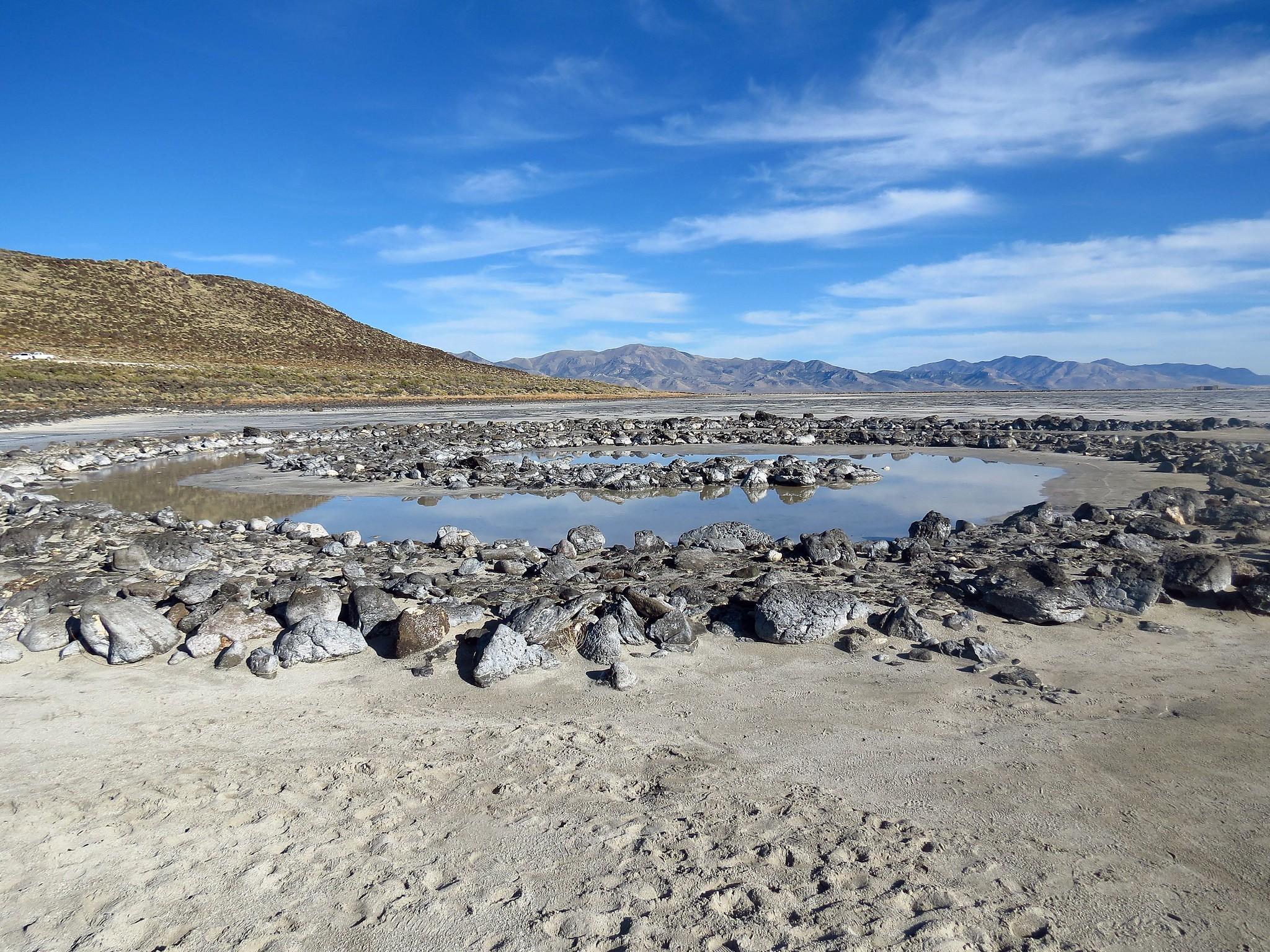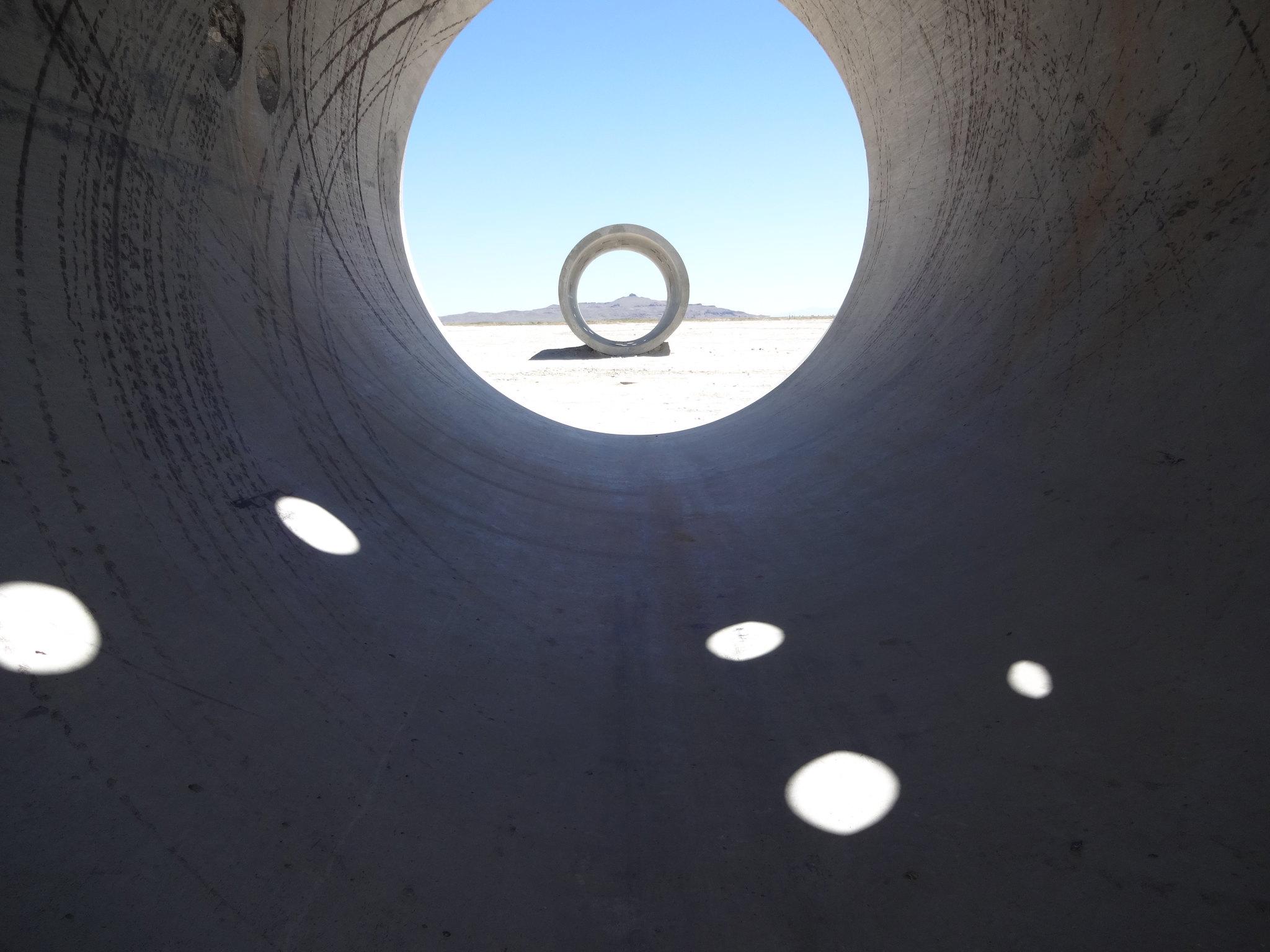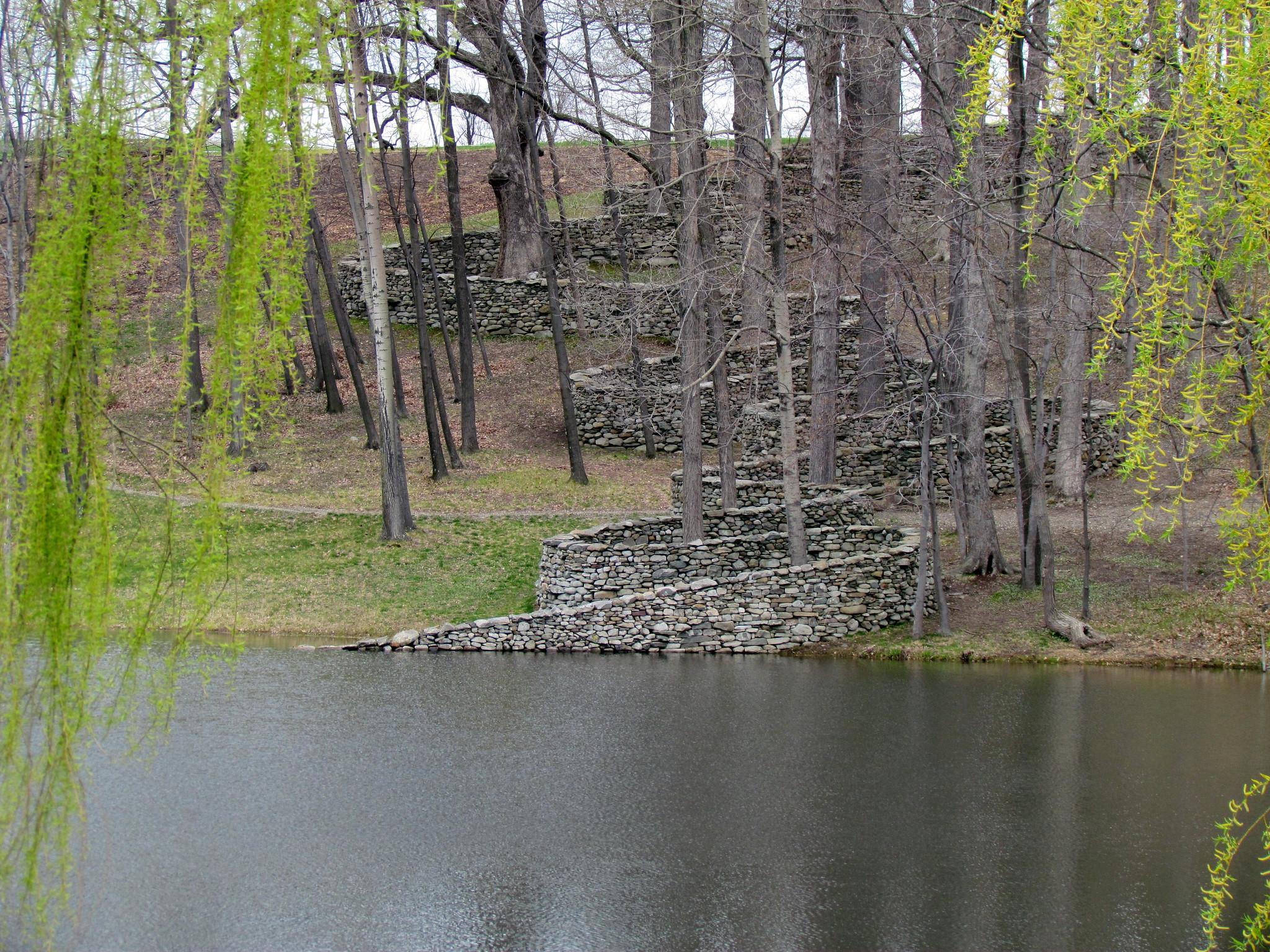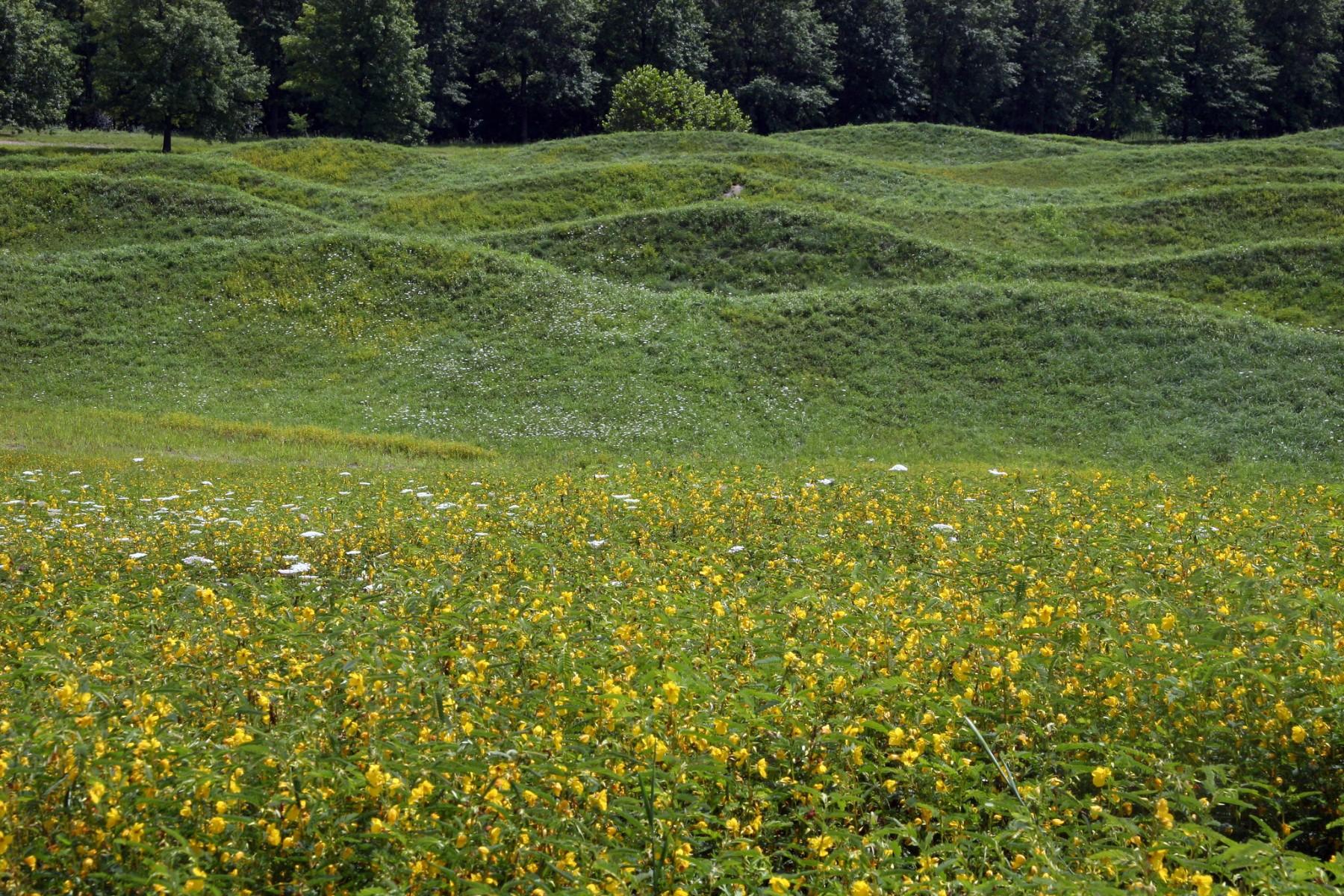Though some land artists insist on manual construction methods, Smithson enlisted the help of contractor Bob Phillips and earth-moving construction vehicles to move the more than 6,000 tons of basalt needed to create the spiral, documenting the process on video. Extending than 1,500 feet into the Great Salt Lake, Smithson’s unique geological feature used rocks, mud, and salt crystals to form its spiral shape.
Despite its size and longevity, the spiral went unseen for decades. Smithson created the work during a drought, when the waters of the Great Salt Lake had receded. Once the drought ended, the spiral was covered by the lake's iconic pink water. As water levels have changed over the decades, Spiral Jetty has disappeared and reemerged, each time revealing subtle changes in the work. Its black basalt rocks are now encrusted in white salt, and the sculpture is more popular than ever: in 2017, it was named Utah’s official state work of Land Art.




